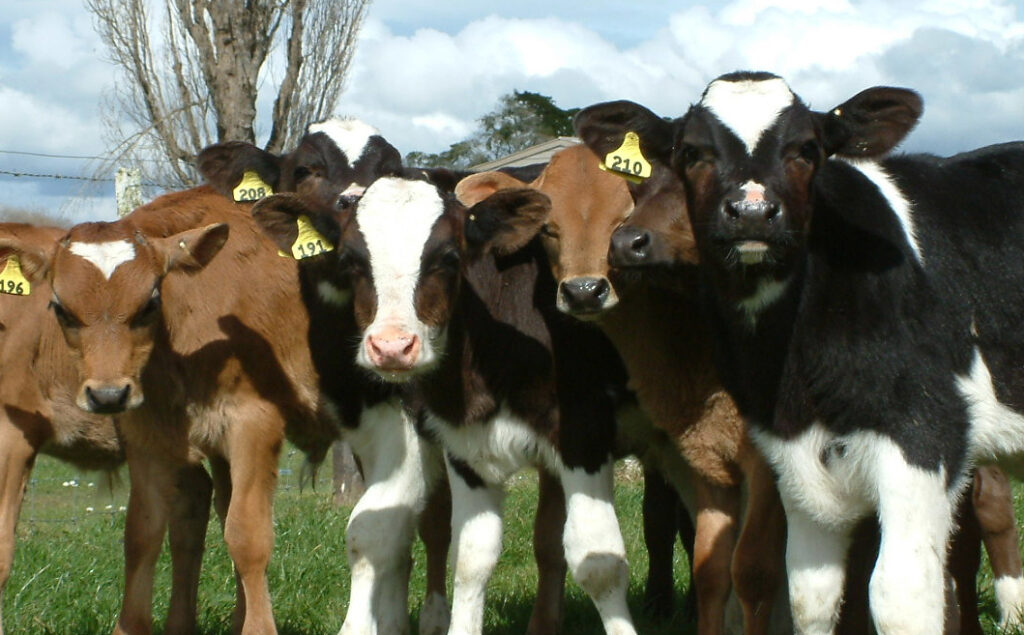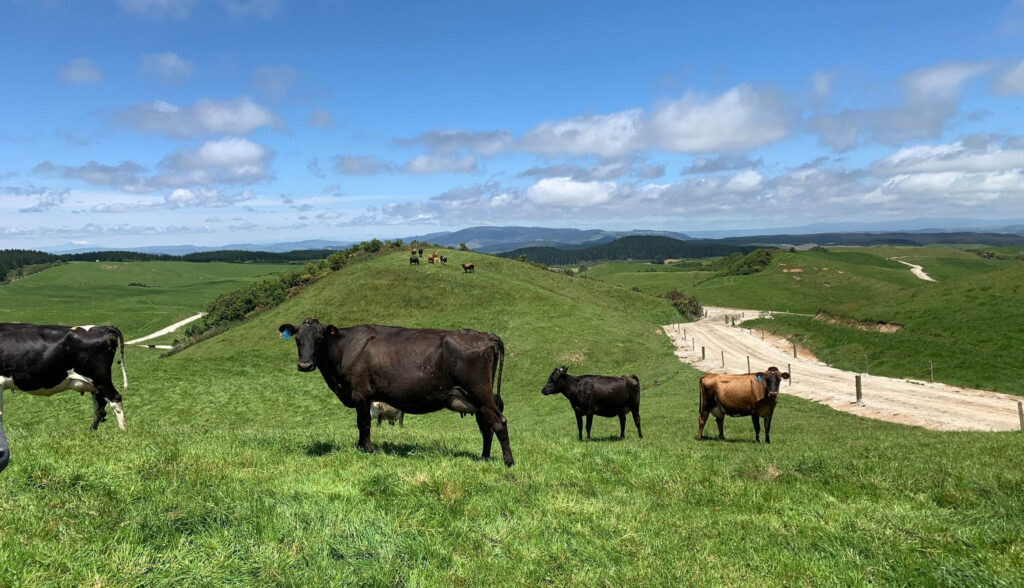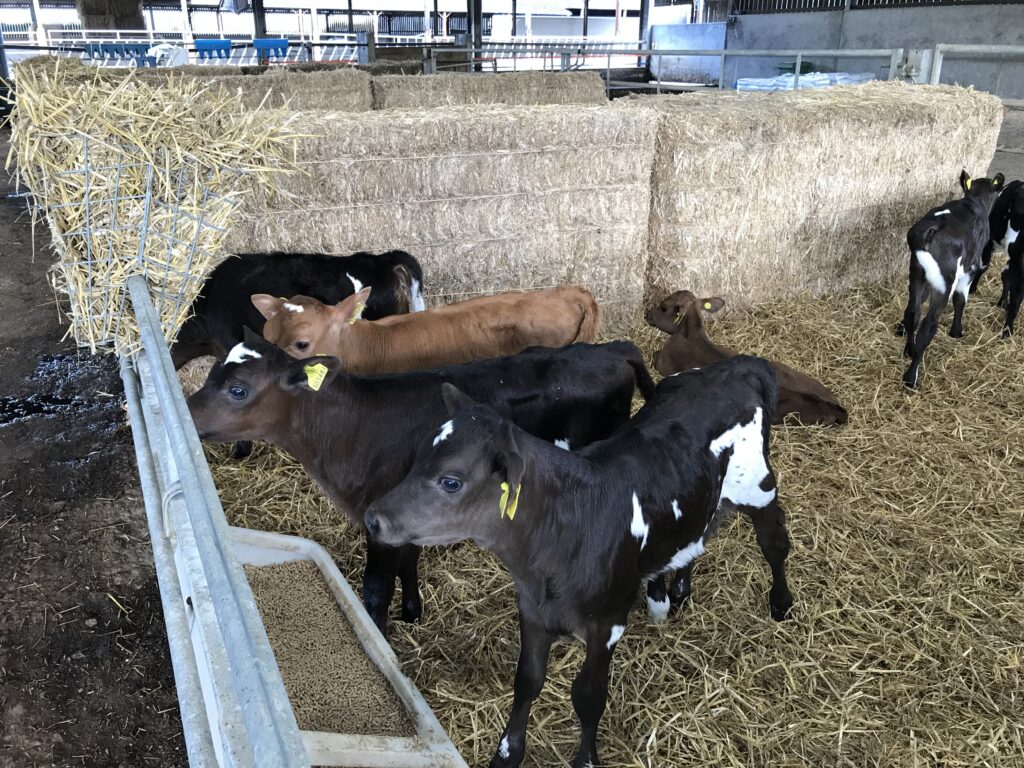This 2022/23 season the first LIC-bred heifers from the original Holstein cows entered the Walford herd. Hopefully these heifers will help lift the milk fat and protein percentages of the herd to take full advantage of the new contract with Joseph Heler Cheese this season. So, what we expect from these heifers and others to come? Sean Chubb reports.
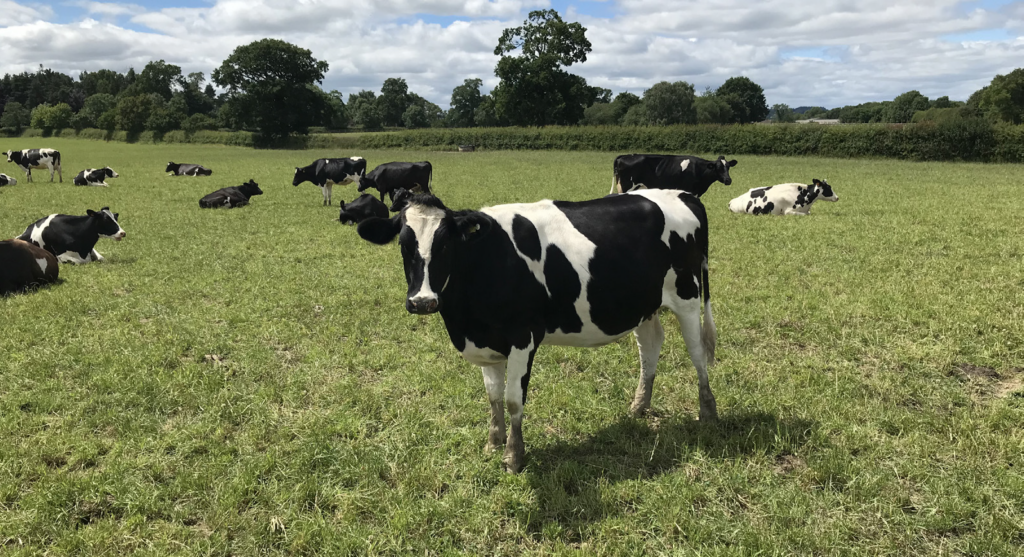
The heifers that entered the herd this year are from Beaut, Hammer, Kelsbells and Sierra. We selected these bulls because at that stage Walford wanted to keep a black and white herd. In the second autumn mating season, the farm lifted this requirement and we used Integrity, Gameplan and Kelsbells. The heifers from that season will be enter the herd next year.
These bulls were used to meet the long-term mating goals for the farm. The aim is to achieve an average liveweight of around 550Kg producing 1 to 1.1Kg of milk solids to liveweight, or around 600KgMS. With the Holsteins averaging around 680Kg of liveweight and average milk solid production being 532KgMS, both needed to move to achieve this goal.
The need for a reduction in the liveweight was greater than what the average liveweight suggests, as the cows had not met their genetic potential for liveweight because of poor rearing. This means the first LIC-bred heifers entering the herd are likely to reach a mature liveweight of around 650Kg.
As liveweight is very heritable, the herd will move faster in this trait compared to milk solid production. For this reason, it’s important that the farm regularly weighs the cows and heifers to ensure that liveweight doesn’t drop below the target.
The farm currently weighs the calves at birth and at regular intervals through to calving, Now the herd is all within the autumn block, the plan is to weigh the cows on a yearly basis. These weighing events will give the farm greater insight into the herd’s liveweight and where it is heading. In turn this enables Walford to be proactive with breeding so the herds liveweight doesn’t drop below the targeted mature liveweight.
What can we expect from the coming heifers?
We are limited in our predictions for two reasons. The farm has changed considerably over the last three years, plus we have little information on the original herd before the monitor farm started.
The below graphs show what could be expected from the herd through selectively breeding from the top performing cows and culling from the bottom.

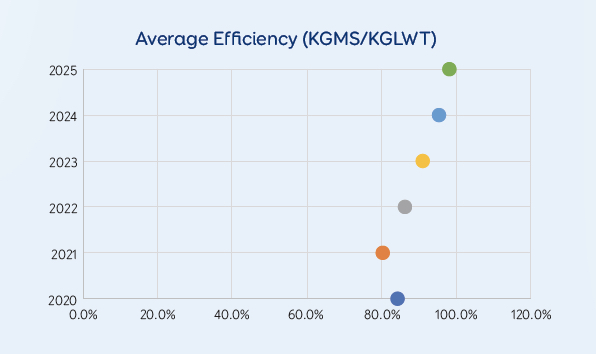
The herd should outperform these predictions because Walford purchased crossbred cows to increase cow numbers faster. These figures do not account for hybrid vigour that will occur through the use of Jersey and KiwiCross® bulls.
It is now more important to maximise the increase in fat and protein, as the new contract with Joseph Heler Cheese pays for fat and protein. The Heler contract offers a base price for litres and bonuses for every percent of fat and protein.
By using last year’s level of fat and protein (4% fat and 3.3% protein), 210 cows doing an average of 8000l would earn the farm £746,762 from milk sales. If Walford farm improves fat and protein levels to 4.5% and 3.8%, while keeping cow numbers and average production the same, they would increase their revenue to £804,720.
The increase in fat and protein would also offset any loss in milk volume. By having levels at 4.5% and 3.8% respectively, the volume of milk would have to drop below an average of 7400 litres per cow before the revenue is less than £746,762.
What can Walford do to ensure the farm is maximising the increase in fat, protein and milk production?
Firstly, the farm needs to breed cows selectively to make the most of the bulls they’re breeding from. This is only now becoming possible, as transitioning to an autumn block meant that heifers had to be taken from cows that made up the original herd. Now the farm is nearing full numbers, and not every heifer calf needs to be kept, so we can be more selective when it comes to breeding replacements.
The introduction of the first LIC-bred heifers into the herd highlighted the need for selective breeding. These heifers have shown a large variation in their production and level of fat and protein. So far this year, they are averaging 23.3 litres with a range of 16.3 to 31.7 litres. The fat is averaging 5.13%, with a range of 3.58% to 6.70%, and the protein is averaging 3.76%, with a range of 3.32% to 4.49%.
Selective breeding will still produce a range within the heifers for their litres, fat and protein, but the averages should be higher and the range lower.
The bottom performing cow also need to be culled. This can only be achieved through obtaining good mating results.
Mating performance
The mating results have steadily improved since the monitor farm process started. They achieved this through focusing on the eight principals of mating success. These being: genetics, calf and heifer management, calving pattern, body condition score and nutrition, cow health, heat detection, AI practices and bull management. These improvements allow greater culling pressure on the bottom end of the herd.
The other benefit of improving the mating performance is the average age of the herd will increase.
When the monitor farm process started, the average number of lactations was 2.3, resulting in very few cows reaching their third and fourth lactation – when a cow hits her peak milk production. With the herd growth slowing, the number of replacements that need to be kept is set to decrease. This will help increase the average number of lactations in the herd.
The last three and half years have been about building the foundations within the herd and on farm. Now the farm is set to take advantage of this through maximising the income from the new milk contract.
If you’re interested in how the farm progresses over the next couple of years with the introduction of the LIC-bred heifers, please join us at our future farm open days.

